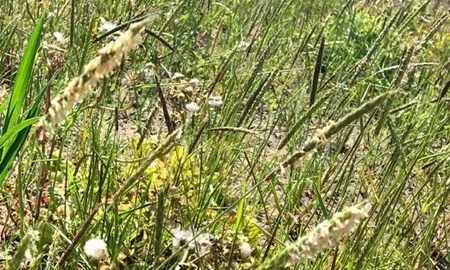
Sean MacGill takes a look at four agronomy challenges in arable crops for this June and July.
Author
Sean MacGill | 2nd June 2020North: 4 agronomy challenges to consider this June and July
Crop Progress
We’ve had about 12mm of rain in the North since mid-March, and while the earlier drilled wheats on heavier land are hanging on, it’s a salvage job on some of the later drilled crops, which are fast moving into survival mode, dropping tillers.Winter barley generally looks fine from a distance, but I wonder whether the yield will be there at harvest, while some of the spring barley drilled after mid-March is about 10cm tall, with huge gaps in fields and you have to question whether they are going to make it. When growers are ripping out spring crops, sometimes following a failed winter crop, it’s pretty disastrous – the only positive is that at least it will hopefully allow a decent entry into a wheat crop next autumn.
Sean’s agronomy tips for June and July
1. Decide on T3 strategy
A lot will depend on what has previously been applied and what the weather does in the first couple of weeks of June for growers looking to decide on ear sprays. A splash of rain might wake things up both in terms of the crop potential and also for disease.Where T2s have gone on, then in that situation 150g/ha of Proline (prothioconazole) will do a good job on all the diseases except brown rust, for which the addition of tebuconazole or a strobilurin, such as in Firefly (fluoxastrobin + prothioconazole), will help.Some growers have been waiting to do a combined T2 and T3 in one squirt. Yellow rust at the moment is more of a concern than Septoria, so in this situation you’re looking at something with good protection against Septoria if the rain comes, and some knockdown of rust. Ascra (prothioconazole + bixafen + fluopyram) would be our choice in this scenario, with the prothiconazole also helping against Fusarium.
2. See how the season develops for further spring barley treatments
A lot will have already decided on a spring barley one shot fungicide approach understandably, but with the stressed crops, Ramularia is a threat. The hardest decision is whether crops just 8-10cm tall warrant a further spray. My advice would be to wait to see how the weather plays out, and if necessary consider a low dose of Siltra (prothioconazole + bixafen) or Fandango (fluoxastrobin + prothioconazole) as appropriate.
3. Begin blight programmes in potatoes
Most potato crops have around 10-30% ground cover at the beginning of June, although with the dry weather some ridges collapsed and needed to be re-ridged. We’ve had good weed control reports from our new pre-emergence herbicide Emerger (aclonifen) – with the loss of diquat, growers are finding they are more reliant of early pre-emergence sprays doing a good job.In irrigated crops especially growers are beginning blight programmes, usually with the cheaper options such as dithane or Curzate (cymoxanil + mancozeb). Later in the programme, the more effective products will come into their own, including Infinito (fluopicolide + propamocarb), which gives very good control of both foliar and tuber blight.
4. Watch out for weed seed shedding early
Just like with crops the dry weather seems to be having an impact on grassweeds, with them moving into survival mode. Some black-grass has headed despite being only 5-6cm tall in our weed screen at Cawood, and could be shedding viable seed much earlier than normal.The same applies for bromes – I’ve seen seed heads in May for the first time that I can remember. If we do get showers that could reawaken some growth in these weeds. That would also be helpful for anyone wanting to hand rogue crops – in the dry it can be difficult to pull weeds, but if you can rogue crops it will be worthwhile to reduce weed seed return – just be aware it might need to be done earlier than you might expect this season.
Local technical updates
See all of our latest agronomy advice from across the country